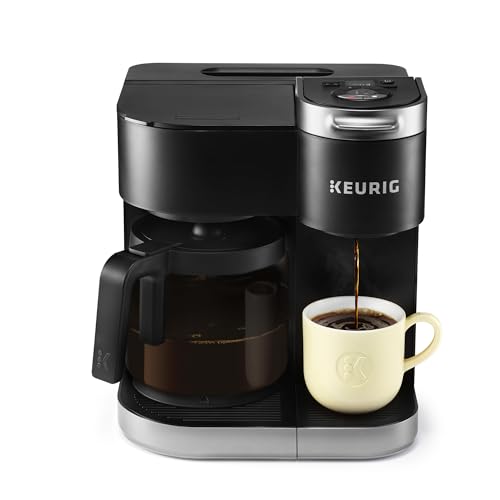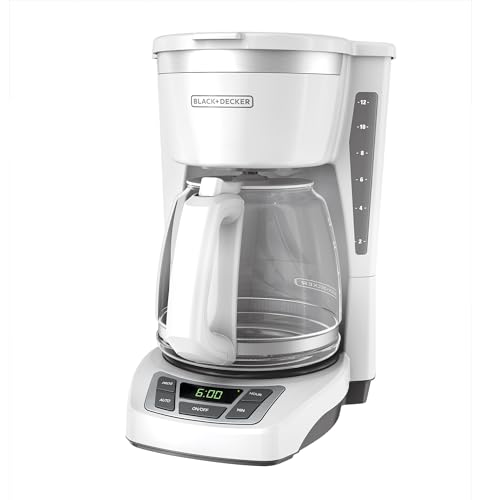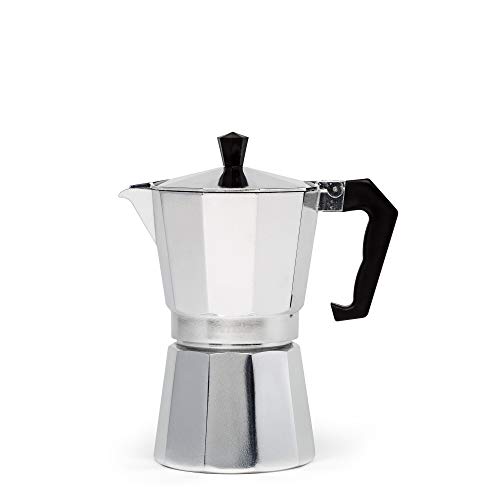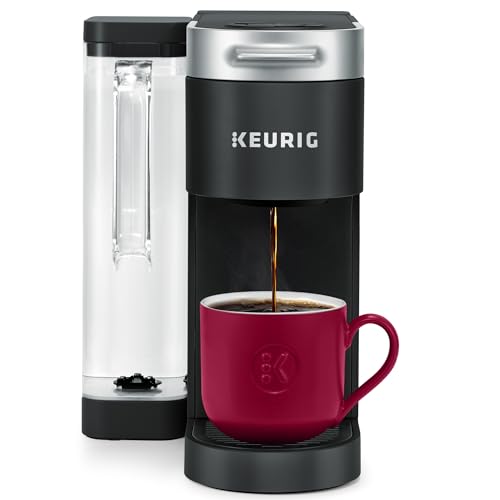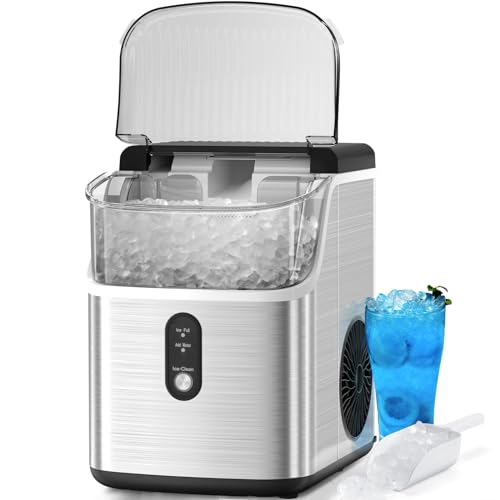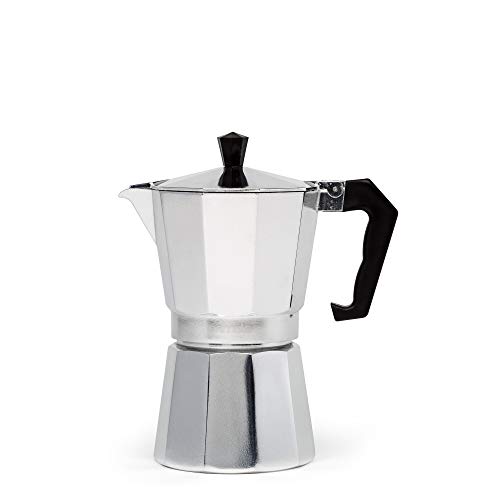- Oxidation And Taste – Oxy Is An Enemy Of Beer
- What Determines How Long A Keg Can Stay Fresh?
- Why Storage Temperature Matters?
- How Long Does a Kegerator Last? – It Depends!
- How Long Is a Keg Good for?
- How Do You Know When a Keg Goes Bad?
- How Are You Dispensing Your Beer?
- What Condition Is Your Kegerator In?
- What Are Some Common Problems That Can Occur With A Kegerator?
- Factors That Affect How Long A Kegerator Lasts
- Kegerators Vs Bottled Beer – Which Is Better For You?
- Can a Keg Be Tapped Twice?
- Kegs Shelf-Life: Manual Pumps vs CO2
- How Long Does A Tapped Keg Last?
- Practical Tips to Keep Your Kegerator Fresh
- FAQs
- Conclusion
How Long Does a Kegerator Last?
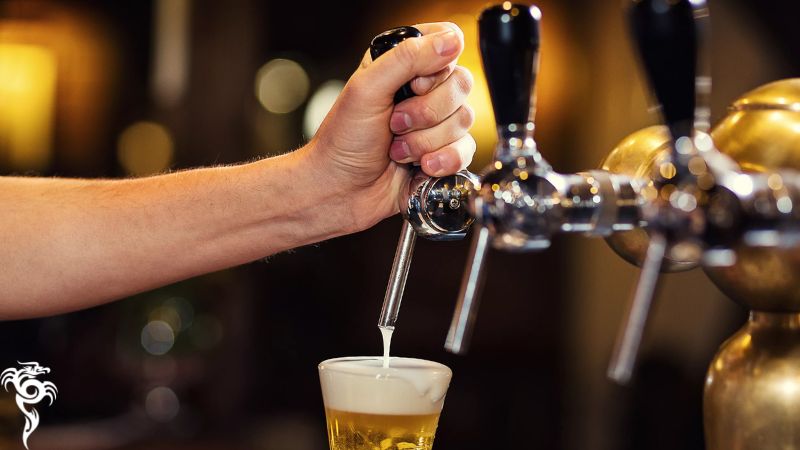
Do you love the taste of a cold, refreshing beer but don’t want to deal with bottles or cans? If so, a kegerator may be the perfect appliance for you! Kegerators allow you to pour draft beer straight from the tap, and they come in various sizes to fit any home. Not only does it allow you to enjoy your favorite beers on tap, but it also helps you save money by preventing wasted beer. But How Long Does a Kegerator Last? This is quite a difficult question to give an exact answer to because there are many different styles of beer and different ways of preservation. Depending on who you ask or the website you read, the answer ranges from 20 days to 120 days. Over time the beer in your barrel will gradually lose its taste and become less fresh. In this post, we’ll answer those questions and more. So whether you’re thinking of buying a kegerator or just want to learn more about them, keep reading!
Oxidation And Taste – Oxy Is An Enemy Of Beer
Air contains Oxygen, and Oxygen is an enemy of beer! One of the main ways that beer goes bad is through oxidation. Oxidation occurs when oxygen molecules interact with the compounds in beer, and this interaction causes a chemical reaction that alters the flavor of the beer. When beer is exposed to Oxygen, it will develop a stale taste. Besides, Oxygen will cause the beer to go flat and lose its carbonation.
There are several ways to prevent oxidation, and one of those is by using a keg. A keg is a container that holds beer under pressure, and this pressure prevents Oxygen from getting into the beer. This means that your beer will stay fresher for longer because it won’t be exposed to Oxygen.
Another way to prevent oxidation is to store your beer in a dark place. Light also causes oxidation, so storing your beer in a dark place will help to prevent it.
You can also use CO2 to prevent oxidation. CO2 is a gas that is heavier than Oxygen, so it will sink to the bottom of your beer and push the Oxygen out. This is why it’s important to pour your beer slowly so that the CO2 doesn’t come out too quickly and cause foam.
What Determines How Long A Keg Can Stay Fresh?
Manual Pumps Vs Kegs with CO2
As we mentioned before, one of the main ways to keep your beer fresh is by using CO2. CO2 is a gas that is heavier than Oxygen, so it will sink to the bottom of your beer and push the Oxygen out. This is why it’s important to pour your beer slowly so that the CO2 doesn’t come out too quickly and cause foam.
Another way to keep your beer fresh is by using a manual pump. A manual pump doesn’t use CO2, but it does create a vacuum that prevents Oxygen from getting into the beer. This means that your beer will stay fresher for longer because it won’t be exposed to Oxygen.
Storage Temperature
A temperature of 38 degrees F is the right storage temperature for your kegs, helping to keep beer fresh longer.
Another factor that contributes to the shelf life of beer is storage temperature. Beer should be stored at a cool, consistent temperature, and it should be kept away from light. If you store your beer in a warm place or expose it to light, it will go bad more quickly.
The type of beer also contributes to its shelf life. Lighter beers such as Pilsners and IPAs generally have a shorter shelf life than darker beers such as stouts and porters. This is because the hops in lighter beers are more susceptible to oxidation.
Pasteurization
Pasteurization is a process that kills bacteria and other microorganisms, and it’s often used to extend the shelf life of beer. However, Pasteurization also alters the flavor of beer, so some people prefer to drink unpasteurized beer. Besides, if you are using a manual pump, there is no need to pasteurize your beer.
Pressure
The pressure in your keg also contributes to how long your beer will stay fresh. The ideal pressure for storing beer is between 10 and 12 PSI. This will keep your beer from going flat and prevent it from foaming when you pour it. In addition, this pressure will keep your beer from oxidizing.
To sum it up, there are a number of factors that contribute to the shelf life of beer. These include the type of beer, how it’s stored, and whether or not it’s pasteurized. Generally, a kegerator will keep your beer fresh for 30-120 days. Of course, this is just an estimate, and your beer may last longer or shorter depending on the factors we’ve talked about.
Cleaning and Maintenance
Cleaning and Maintenance use. This will prevent bacteria from growing and keep your beer tasting fresh.
To clean your keg, you’ll need:
– A cleaning brush
– A bucket
– Cleaning solution (you can use a commercial cleaning solution or make your own with 1 part water and 1 part bleach)
– Hot water
First, disassemble your keg and remove the lid. Then, use the cleaning brush to scrub the inside of the keg. Be sure to reach all of the nooks and crannies.
Next, mix together your cleaning solution and hot water in the bucket. Submerge all of the parts of your keg in the solution and let them soak for a few hours.
After the parts have soaked, rinse them off with hot water. Allow them to air dry, or dry them with a clean towel.
Once everything is dry, reassemble your keg and you’re ready to go!
Cleaning your keg on a regular basis will prolong its life and keep your beer tasting fresh. Be sure to follow the steps above and clean your keg after every use.
Why Storage Temperature Matters?
The flavor of beer can be affected by light and heat, so it’s important to store your beer in a cool, dark place. No matter what kind of keg you have, if it isn’t stored at the right temperature, then there will be a decrease in quality. The recommended storage temperature for beer is 38°F – but don’t go too high or low! A temperature of 38 degrees Fahrenheit is ideal for storing beer.
If you expose your beer to light or heat, it will go bad more quickly. This is because the hops in beer are susceptible to oxidation. Oxidation is a chemical reaction that causes food to spoil.
So, if you want your beer to taste its best, be sure to store it in a cool, dark place. And, if you’re using a manual pump, there’s no need to worry about PasteurizationPasteurization!
If Your Beer Is Too Hot?
When you serve your beer too warm, it can cause excessive foam and stale flavors. The best way to avoid this? Keep cool! If the temperature gets above 55°F, then bacteria will start growing, which spoil quickly–so make sure not only do they stay below that magic line but also 45-50 degrees Fahrenheit works well for storing them just fine as long we keep
If your beer gets too hot, it can spoil. If you’re using a manual pump, there’s no need to worry about PasteurizationPasteurization!
Excessive heat can cause the hops in beer to become oxidized, which alters the flavor of the beer.
So, if your beer gets too hot, it’s best to discard it.
If Your Beer Is Too Cold?
It’s a good idea to store your kegs in a beer cooler or possibly a refrigerator that’s been converted to maintain this desired temperature at all times.
If the temperature of the beer is too cold, the beer will be trapped in the carbonation process. This reduces the taste and aroma of the beer. Even if the temperature drops below 28°F, your beer will gradually solidify. In addition, there are some beers that can be slightly frozen at 32 degrees F. So, it’s important to store your beer at the right temperature!
How Long Does a Kegerator Last? – It Depends!
Now that we’ve talked about some of the ways to prevent oxidation, let’s talk about how long a kegerator will last. As we mentioned before, there are many factors that contribute to the shelf life of beer, such as the type of beer, how it’s stored, and whether or not it’s Pasteurized.
Pasteurization is a process that kills bacteria and other microorganisms, and it’s often used to extend the shelf life of beer. However, PasteurizationPasteurization also alters the flavor of beer, so some people prefer to drink unpasteurized beer.
The type of beer also contributes to its shelf life. Lighter beers such as Pilsners and IPAs generally have a shorter shelf life than darker beers such as stouts and porters. This is because the hops in lighter beers are more susceptible to oxidation.
Another factor that contributes to the shelf life of beer is how it’s stored. Beer should be stored at a cool, consistent temperature, and it should be kept away from light. If you store your beer in a warm place or expose it to light, it will go bad more quickly.
So, how long does a kegerator last? It depends on a number of factors, but generally, a kegerator will keep your beer fresh for 30-120 days. Of course, this is just an estimate, and your beer may last longer or shorter depending on the factors we’ve talked about.
To extend your beer’s shelf life, it’s important to store it properly. Here are some tips for storing your beer:
– Store your beer in a cool, dark place.
– If you’re not using a keg, store your beer in bottles or cans.
– Avoid exposing your beer to light.
– If you’re using a keg, use CO2 to prevent oxidation.
– Drink your beer within a few weeks of opening it.
How Long Is a Keg Good for?
A keg of beer will last for about 30-120 days, but this is just an estimate. There are a number of factors that contribute to the shelf life of a keg, such as the type of beer, how it’s stored, and whether or not it’s Pasteurized.
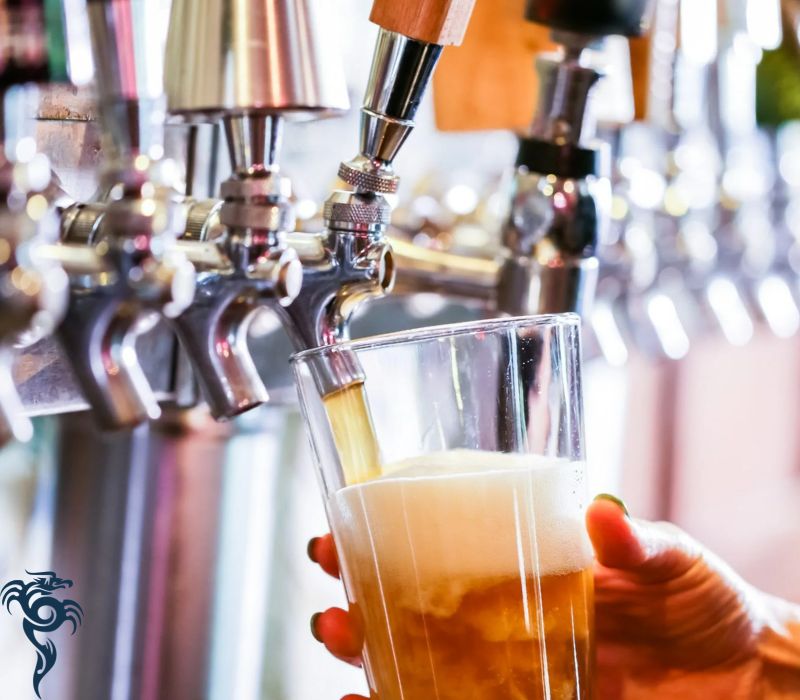
The type of beer also contributes to its shelf life. Lighter beers such as Pilsners and IPAs generally have a shorter shelf life than darker beers such as stouts and porters. This is because the hops in lighter beers are more susceptible to oxidation.
Another factor that contributes to the shelf life of beer is how it’s stored. Beer should be stored at a cool, consistent temperature of 38°F, and it should be kept away from light. If you store your beer in a warm place or expose it to light, it will go bad more quickly.
How Do You Know When a Keg Goes Bad?
Foul Taste
The most obvious way to tell if a keg of beer has gone bad is by the taste.Your beer may have a sour taste of lemon, grapefruit or other natural fruits. When beer starts to taste like an unusually sour, alcoholic, or just-off sulfur stench, it might be time to ditch it. Besides, no one wants to drink bad beer!
Expired Beer
If the beer is past its expiration date, it’s probably time to get rid of it. Most commercial beers are good for about 3-6 months after the bottling date, but this can vary depending on the type of beer and how it’s stored.
Cloudy Beer
Another sign that a keg of beer has gone bad is if it’s become cloudy. This is usually due to oxidation, which alters the flavor of the beer. So, if your beer is starting to look cloudy, it’s probably time to ditch it.
Foamy Beer
If the beer is foamy or has large bubbles, this is also a sign that it’s gone bad. When beer goes bad, it produces more carbon dioxide, which makes the beer foamy. So, if your beer is starting to get foamy, it’s time to pour it out.
Bad Smell
Beer that has gone bad will often smell sour, vinegary, or just off. If the beer smells bad, it’s probably not going to taste any better.
If you notice any of these signs, it’s probably time to discard the keg of beer. No one wants to drink bad beer, so it’s best to get rid of it before anyone has a chance to drink it.
How Are You Dispensing Your Beer?
Beer Dispensing Systems
Party Pump or Manual Pump
The manual pump is a common find at house parties and backyard cookouts. Party pumps are typically used for short periods of time, such as parties or other events. They’re not recommended for long-term use because they don’t keep the beer cold and can introduce Oxygen into the keg, which will cause the beer to go bad more quickly. It works by pumping air into the keg, pressurizing it so that you can dispense your beer with ease from this device alone- but there are many problems associated like overpumping or excessively foamy brews, which stem mostly due to its use in improperly filling tanks for large breweries.
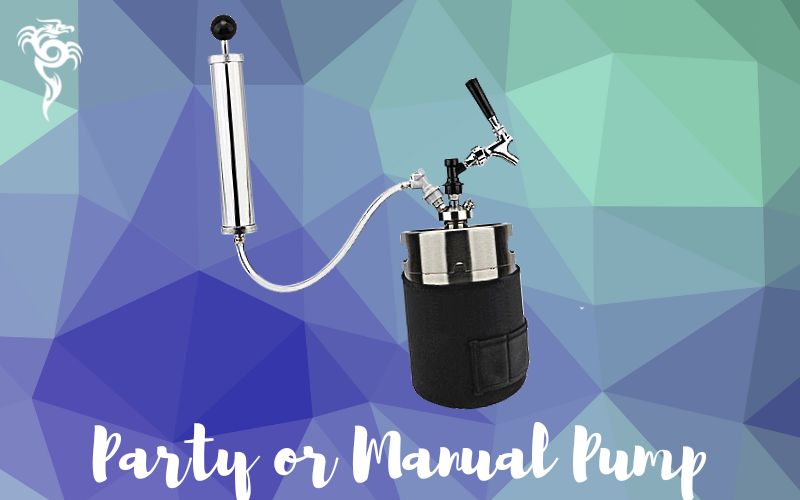
Plus, it has a rather short shelf life. That’s because it uses Oxygen to pressurize your beer keg. The introduction of Oxygen into beer like that will make the beer quickly oxidize and rot, reducing the overall flavor quickly.
Most people agree that, when using this type of pump to dispense beer from kegs, they will notice that the taste of beer changes quite quickly. The more Oxygen you pump, the faster the change.
Normally, for the use of this type of pump to dispense beer, it is recommended to finish the beer keg up to 8 hours in advance before it becomes foul. There are several types, and with the right conditions, you can keep up to 24 hours. It all depends on the type of beer and the amount of Oxygen injected.
Using a Kegerator with CO2
Kegerators are the best way to enjoy your favorite craft beer, which is why keg dispensing systems have become so popular in restaurants. Not only does a refrigerator storage cabinet keep each individual serving cold and carbonated for hours on end – it also prevents warm foam from emerging when you open up those valves! The kegerator is an excellent choice for those who want their beer fresh. The keg that is used in a CO2 system will keep your beer fresher for much longer than if you were using manual pumps. The reason behind this? It avoids oxidation, which damages natural flavors and head styles!
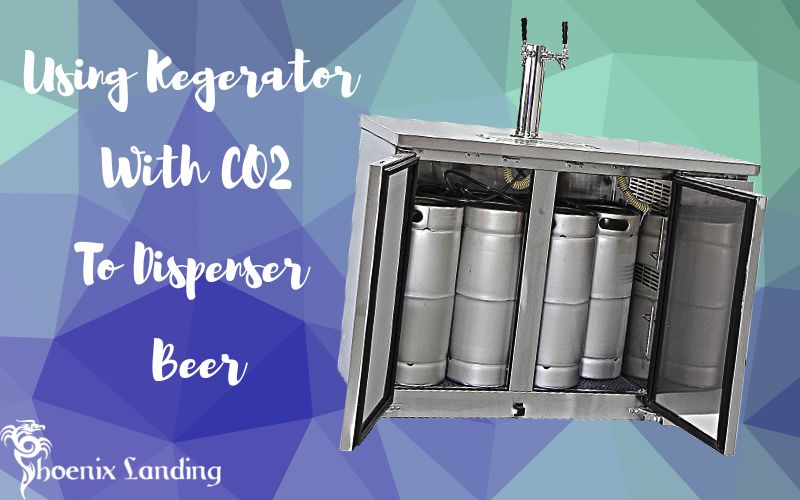
Using a kegerator to dispense beer keeps your beer fresh for many months; however how long it takes for a beer to brew depends on the beer itself.
If your beer is pasteurized, it can be stored for at least 3 months, even if stored at the right temperature for that beer, it can last up to 6 months.
If your beer isn’t pasteurized, it will last up to 2 months, even if it’s stored at the right temperature. To find out if your beer has been pasteurized or not, you need to consult the search sites or contact the distributor or manufacturer.
Jockey Box
A jockey box is a great way to serve large quantities of beer at once, and it can keep your beer cold for hours. A jockey box is a cooler that has been modified to hold kegs of beer, and it has a faucet on the front so you can dispense your beer without having to open the cooler.
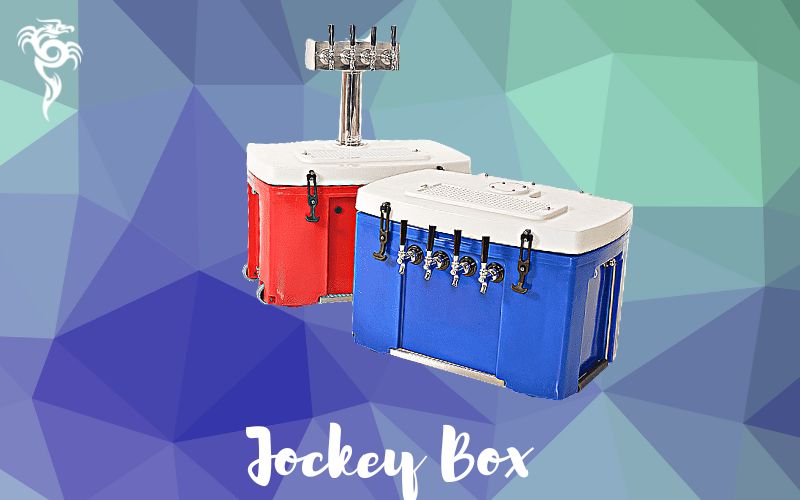
Jockey boxes are typically used for outdoor events, such as weddings or festivals because they can keep your beer cold even in hot weather. Jockey boxes can also be used indoors, but they’re not as common.
When using a jockey box to dispense your beer, you’ll need to use CO2 to keep the beer carbonated. CO2 is added to the jockey box via a CO2 tank, and the CO2 pressure is regulated by a CO2 regulator.
The beauty of using a jockey box to dispense beer is that you can keep your beer cold for hours without having to worry about it going flat. Jockey boxes can also be used to dispense soda or wine, so they’re very versatile.
What Condition Is Your Kegerator In?
The condition of your kegerator will have an effect on how long your beer will stay fresh. If you keep your kegerator clean and well-maintained, your beer will last longer.
If you don’t clean your keg regularly, the beer can start to taste stale. And if you don’t clean your taps, they can get clogged, which will cause foam and flat beer.
It’s important to clean your keg after each use, and it’s also a good idea to clean your taps once a week. You can use a commercial cleaning solution, or you can make your own cleaning solution with water and bleach.
To clean your kegerator, first remove the shelves and wash them in hot, soapy water. Then clean the interior of the fridge with a mild cleaning solution. Be sure to rinse the fridge well after cleaning it.
Next, clean your taps with a tap brush. If your taps are very dirty, you may need to soak them in a cleaning solution overnight.
Finally, clean the outside of your kegerator with a damp cloth.
What Are Some Common Problems That Can Occur With A Kegerator?
There are a few common problems that can occur with a kegerator.
1. The most common problem is that the beer can get flat. This can happen if the CO2 tank runs out of gas or if the pressure regulator isn’t set properly.
2. Another common problem is that the beer can get warm. This can happen if the fridge isn’t set to the proper temperature or if the door is left open for too long.
3. Foamy beer can be a problem if the taps aren’t clean, or if the keg isn’t chilled properly.
4. Finally, cloudy beer can occur if the keg isn’t cleaned properly or if it’s stored for too long.
Prevent These Problems
There are a few things you can do to prevent these problems from occurring.
1. Make sure you clean your keg regularly and that you don’t store it for more than 3 months.
2. Clean your taps once a week, and be sure to use a tap brush.
3. Keep your CO2 tank full, and check the pressure regulator regularly.
4. Finally, set the fridge to the proper temperature, and don’t leave the door open for too long.
Now, you’re reading “How Long Does a Kegerator Last?” of Phoenix Landing Bar. Keep reading!
Factors That Affect How Long A Kegerator Lasts
There are a few factors that can affect how long a kegerator lasts.
1. The quality of the kegerator. A higher quality kegerator will last longer than a lower quality one.
2. How often do you use it. If you use your kegerator regularly, it will last longer than if you only use it occasionally.
3. How well do you maintain it. If you keep your kegerator clean and well-maintained, it will last longer than if you don’t.
4. The type of beer you’re storing in it. Some beers are more sensitive to temperature changes than others, so they may not last as long in a kegerator.
5. Finally, the ambient temperature. If the temperature in your home is hot, your beer may not last as long as it would in a cooler environment.
In short, how long a kegerator lasts depends on a few factors. However, if you keep your kegerator clean and well-maintained, you can expect it to last for many years.
Kegerators Vs Bottled Beer – Which Is Better For You?
There are a few things to consider when deciding whether a kegerator or bottled beer is better for you.
1. The price. Kegerators are more expensive than bottled beer, but you’ll save money in the long run because you won’t have to buy beer as often.
2. The taste. Some people prefer the taste of bottled beer, while others prefer the taste of draft beer. Again, there’s no right or wrong answer here, it’s just a matter of preference.
3. The convenience. Bottled beer is more convenient because you can grab a couple of bottles and go. A kegerator is less convenient because you have to set it up and wait for the beer to cool down before you can drink it.
4. The environmental impact. Kegerators are more environmentally friendly because they use less energy and produce less waste.
In the end, it’s up to you to decide whether a kegerator or bottled beer is better for you. Of course, both options have pros and cons, so it’s just a matter of deciding what’s most important to you.
If you’re looking for the best possible taste, then a kegerator is the way to go. However, bottled beer is the better option if you’re looking for convenience and environmental friendliness.
Can a Keg Be Tapped Twice?
Yes, a keg can be tapped twice. However, you may not get as much beer from the second tap because some of the beer will be left in the keg. You may also notice a slight decrease in quality from the second tap.
If you’re planning on tapping a kegerator more than once, it’s important to clean the tap and the keg before each use. This will help prevent bacteria from growing and ruining your beer.
Kegs Shelf-Life: Manual Pumps vs CO2
One of the most important factors in determining keg shelf-life is how the beer is dispensed. Beer that is dispensed with a manual pump will only last for a few days, while beer dispensed with CO2 can last for weeks or even months.
This is because CO2 keeps the beer fresh by preventing Oxygen from getting into the keg. If you’re planning on storing your beer for a long period of time, it’s best to use a keg with a CO2 system.
When it comes to kegerator shelf-life, there are a few things to keep in mind. First, the quality of your kegerator will affect how long your beer lasts. Second, how you dispense your beer will also affect its shelf-life.
If you’re using a manual pump, your beer will only last for a few days. However, if you’re using CO2, your beer can last for weeks or even months. Finally, the ambient temperature of your home will also affect how long your beer lasts.
How Long Does A Tapped Keg Last?
A tapped keg will last for about two weeks. However, this is only true if the keg is kept at a consistent temperature. If the temperature fluctuates, the beer will go bad faster.
It’s also important to keep the keg in a cool, dark place. Light and heat can cause the beer to go bad quickly.
If you’re planning on storing your beer for a long period of time, it’s best to use a keg with a CO2 system. This will keep the beer fresh for longer periods of time.
Practical Tips to Keep Your Kegerator Fresh
Here are a few practical tips to keep your kegerator fresh:
1. Store your kegs in a cool, dark place.
2. Keep the temperature of your kegerator consistent.
3. Clean your kegerator regularly.
4. Use a keg with a CO2 system if you’re planning on storing beer for a long period of time.
5. Dispense your beer using CO2 if possible.
FAQs
How Often Should I Clean My Kegerator?
You should clean your kegerator every time you change the keg. This means that you’ll need to clean it at least once a month if you’re using it regularly.
Cleaning your kegerator is important because it helps prevent bacteria from growing and ruining your beer.
Now, you’re reading “How Long Does a Kegerator Last?” of Phoenix Landing Bar. Keep reading!
What’s the Best Way to Clean a Kegerator?
The best way to clean a kegerator is with a solution of water and vinegar. Vinegar is a natural disinfectant and will help kill any bacteria that may be growing in your kegerator.
To clean your kegerator, simply mix equal parts water and vinegar in a spray bottle. Then, use the solution to wipe down the inside of your kegerator.
Can I Use Bleach to Clean My Kegerator?
No, you should never use bleach to clean your kegerator. Bleach is a harsh chemical and can damage the finish on your kegerator.
If you’re looking for a natural disinfectant, vinegar is the best option. Vinegar is safe to use on all surfaces and will kill any bacteria that may be growing in your kegerator.
How long does a 5-gallon CO2 tank last in a kegerator?
A 5-gallon CO2 tank will last for about 6-8 weeks. This assumes that you’re using it to dispense beer on a regular basis.
If you’re only using it occasionally, the CO2 tank will last for a longer period of time.
How long does a keg last once tapped with CO2?
A tapped keg will last for about two weeks. However, this is only true if the keg is kept at a consistent temperature. If the temperature fluctuates, the beer will go bad faster.
Keeping the keg in a cool, dark place is also important. Light and heat can cause the beer to go bad quickly.
If you’re planning on storing your beer for a long period of time, it’s best to use a keg with a CO2 system. This will keep the beer fresh for longer periods of time.
How do I know when my kegerator CO2 tank is empty?
There are a few ways to tell when your CO2 tank is empty. The first way is to check the gauge on the tank. Most tanks have a gauge showing how much CO2 is left.
Another way to tell if your CO2 tank is empty is by checking the pressure in your keg. If the pressure is low, it means that you’re out of CO2.
Finally, you can also try to dispense beer from your keg. If no beer comes out, you’re out of CO2.
Conclusion
In short, Kegerators are a great way to keep your beer cold and fresh, but so How Long Does A Kegerator Last? Depending on your type of kegerator, the answer ranges from 20 to 120 days. Kegerators are a great investment for anyone who loves beer. Not only do they save you money in the long run, but they also make it easy to entertain guests. If you’re considering purchasing a kegerator, read our latest blog post on how long they last. We hope this information helps you make an informed purchase and enjoy your new kegerator for years to come!
If you want more information to refer to phoenixlandingbar.com
